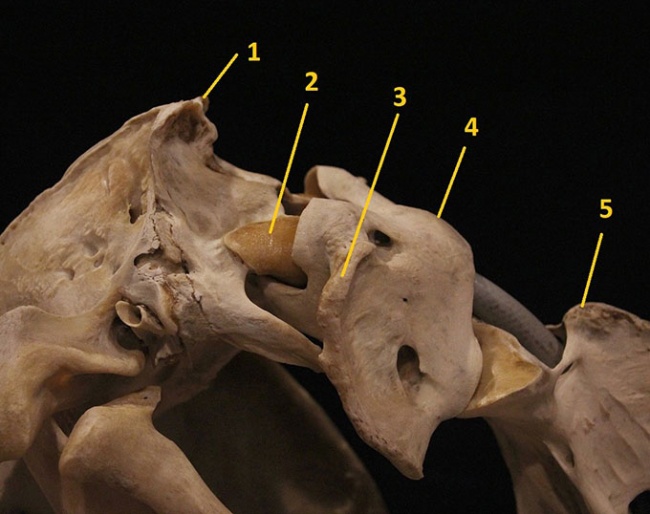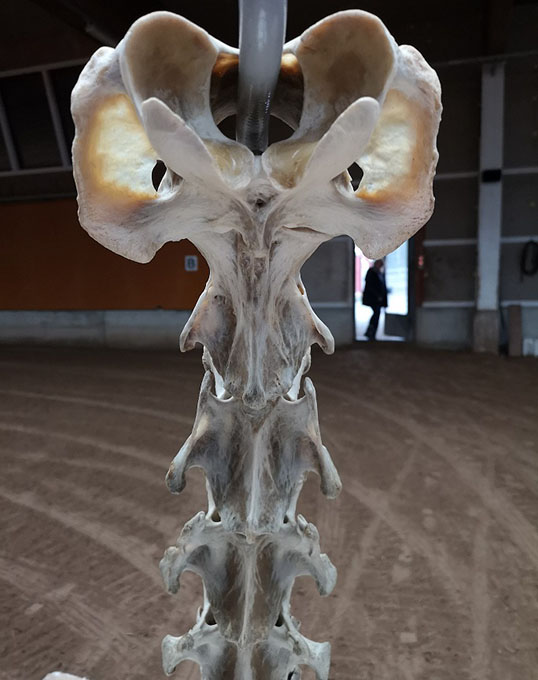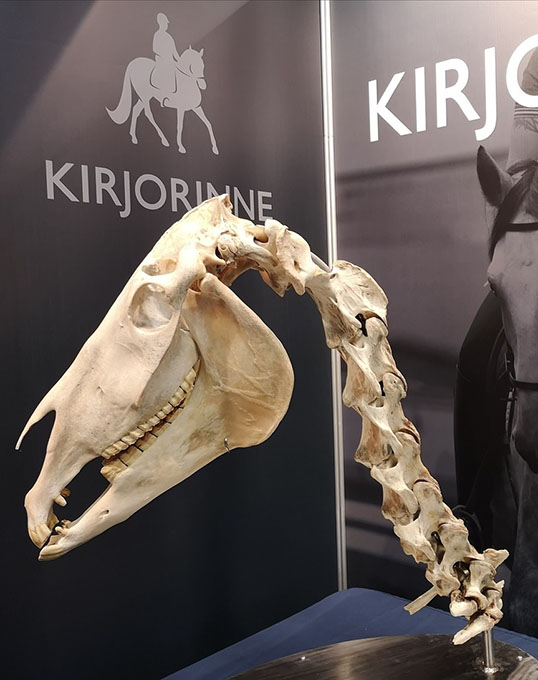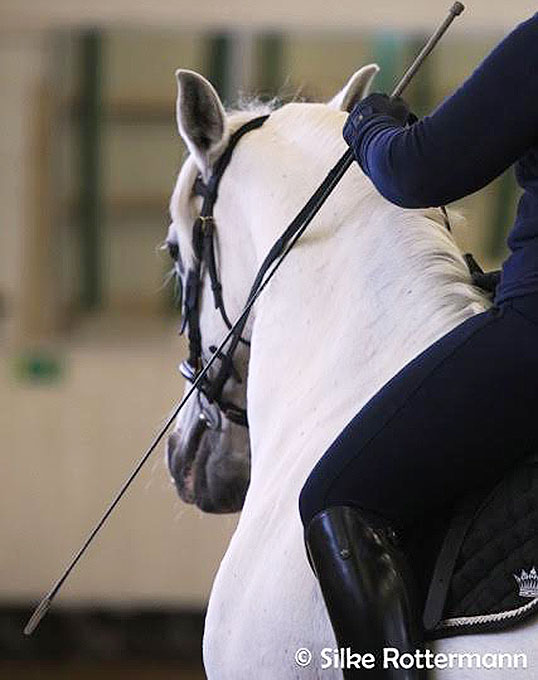
Horses use their neck to balance their body. It is an important area when looking for compensations and problems in the horse’s movement. It is also one of the most mobile, sensitive, and complex structures in a horse with connections that affect the rest of the body. Nerves travel through the neck and the body in the spinal cord inside the spine. Muscles, ligaments and tendons attach to the spine via connective tissue (fascia).
If the functionality of the neck is restricted for any reason, it will cause problems in rideability, balance and the quality of movement. Walk is a very sensitive gait, because any tension or lack of the natural neck movement will affect this gait very easily. A rider needs a soft hand and contact skills to ride the walk well.
To understand the structures of the neck, we will start with the skeletal parts that form the support and attachment points for other structures. The horse’s neck, the cervical spine, has 7 vertebrae. They allow different kind of movement directions, depending on their anatomy and location.
Atlanto-occipital joint
The neck attaches into the skull at the poll, behind the ears. Occipital condyles behind the skull join with the first cervical vertebra C1 that is known as atlas. This link between C0 (the skull) and C1 (atlas) allows extension and flexion movement, but also lateral flexion and even some slight axial rotation movement.

skull (and that´s how it would look like behind the
head when you stand in front of your horse)
Atlanto-axial joint
After the atlas follows C2 which is known as axis. Between C1 and C2 happens the so-called axial rotation. Some slight rotation of the neck can also happen when the spine works together, but this link between C1/C2 is specially built for that. If the horse tilts the head and drops one ear lower when asked for lateral flexion of the poll, this is the place where that movement usually and mostly comes from. Such excessive tilting needs to be corrected by the rider and if the problem remains, the reason needs to be addressed. C1/C2 can also create a little flexion and extension movement.
Following vertebrae
After C2 from C3 to C7 there is mostly flexion and extension and lateral bending available. The vertebrae become shorter towards the lower part of the neck and the range of movement also becomes slightly larger. The C7 is the last cervical vertebra and it connects the neck to the thoracic spine, the trunk. The base of the neck is also one key area in how well the horse begins the movement and how he carries the rider.
Why is this so important?

vertebra
For the spinal health it is important that we understand how the neck is built and that we use training methods that respect the anatomy of the horse. Classical training methods usually take this in account very well and allow the natural use and movements of the neck. We need to teach the horse to variate between the different frames that are good and avoid static or overbent positions. In case the horse himself suggests a too round frame or becomes tense in any other way, it is the rider’s responsibility to teach the horse to move in a correct way. Well ridden variations in the frame show the horse how to move in a balanced way, which is very pleasant for both horse and rider. Bad postures (overbend or inverted) lead to wear and tear sooner or later. Bones can adapt to stress and loading relatively quickly by remodelling and creating new bone formations, which can be very problematic. Bones are also covered in connective tissue (periosteum), which again is directly connected to various other structures and tissues.

the horse when ears are not level
Cervical spine movement directions described after:
Equine Locomotion, Second Edition by Willem Back and Hilary Clayton
Horse Movement – Structure, Function and Rehabilitation by Gail Williams (the spinal movement chart of Professor Hilary Clayton)
Text © Niina Kirjorinne
Photos © Suvi Vuorenmaa, sourced from skeleton in Kirjorinne's archive
Related Links
Functionality in Equitation: Look At The Mouth
Functionality in Equitation: Fine Motor Skills in Your Hands
Trainining with Frömming: "Getting a Classically Schooled, Yet Incorruptible Eagle Eye of a Judge"
Functionality in Equitation: No Horse is Born with a Bad Mouth
Functionality in Equitation: Resetting the Leg Aids
Functionality in Equitation: Skin Damage from Leg Aids
Functionality in Equitation: The Forward Thinking Hand